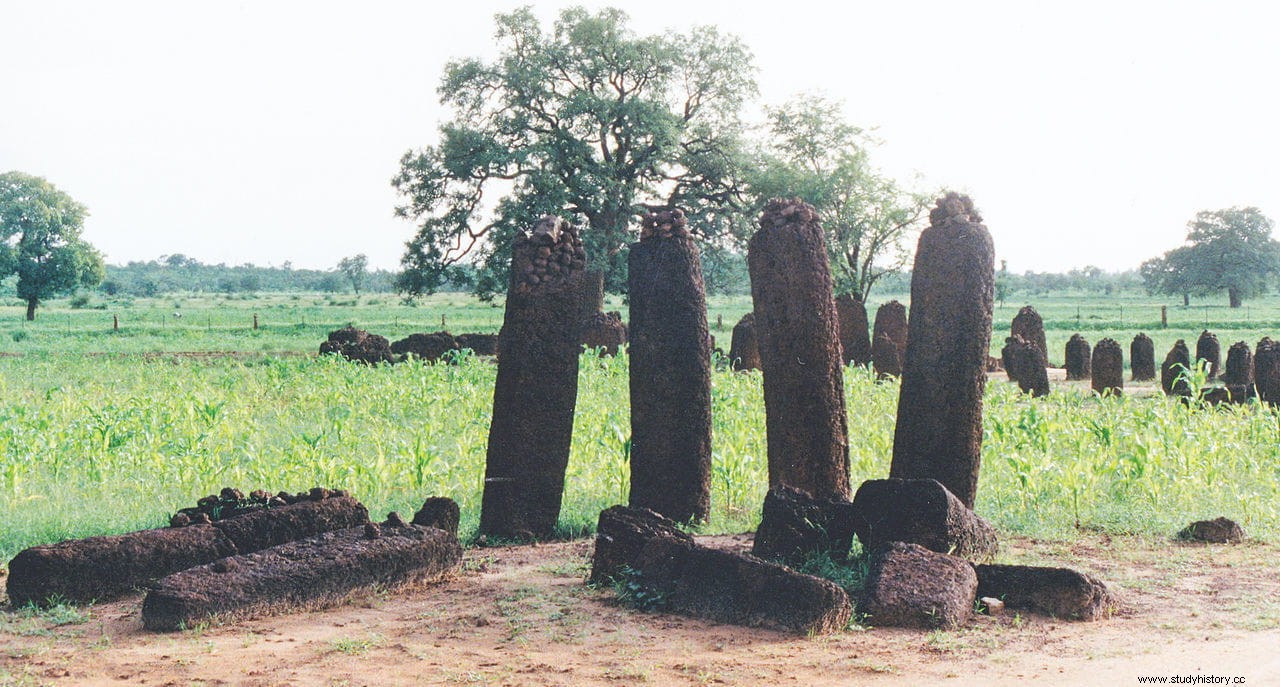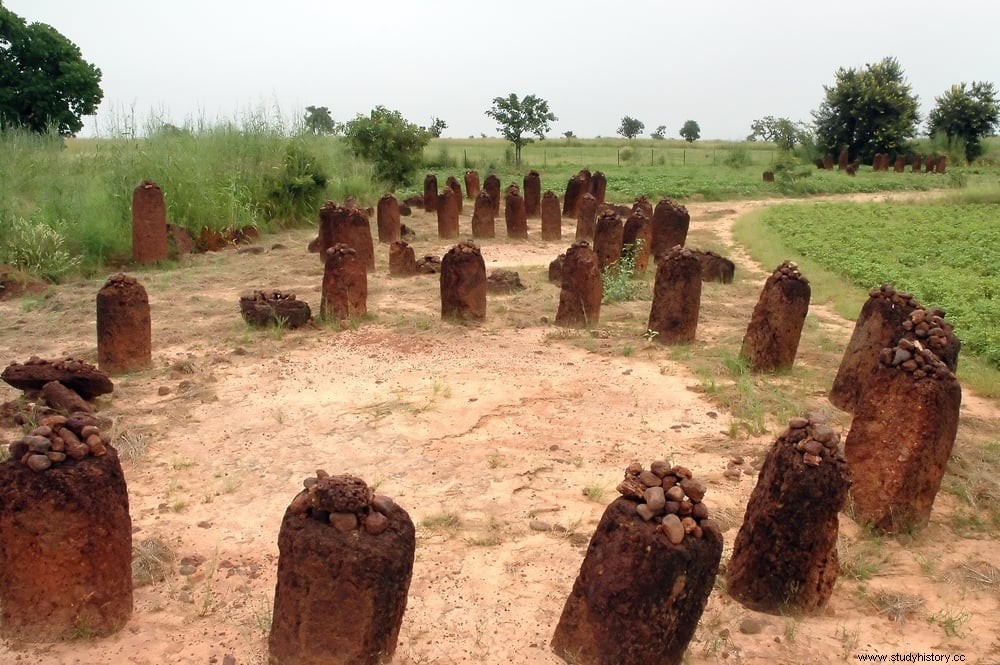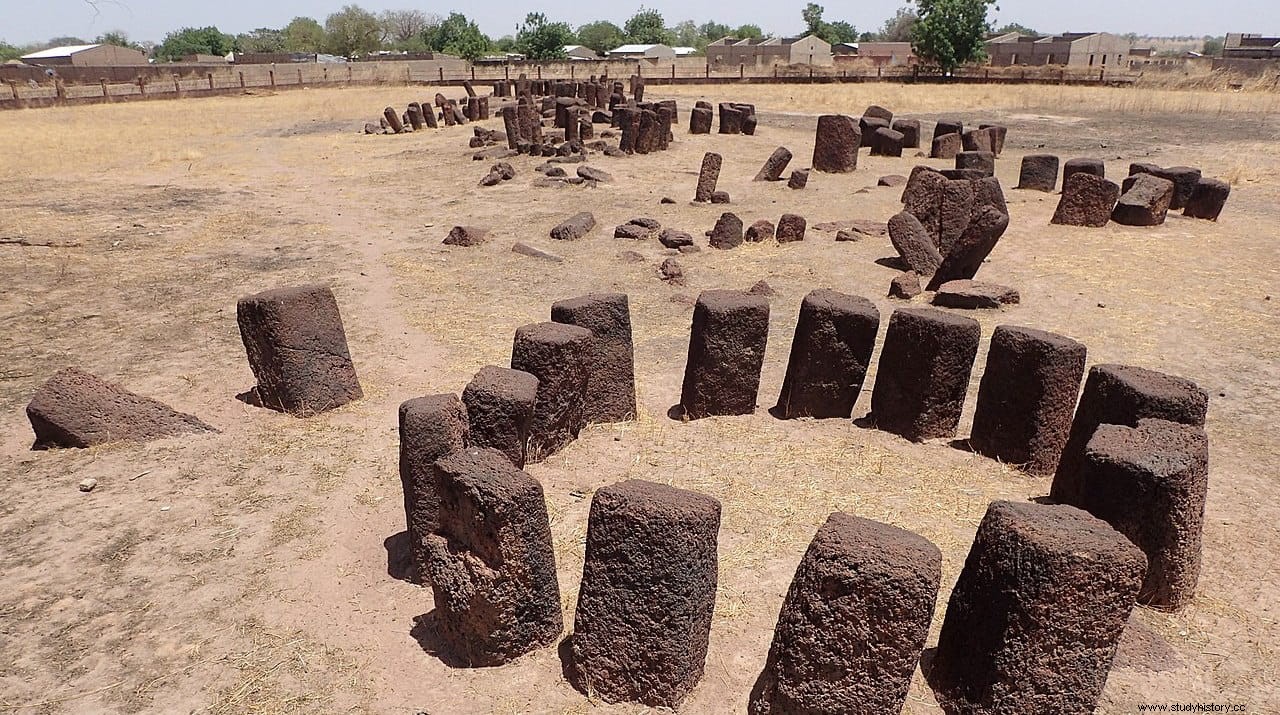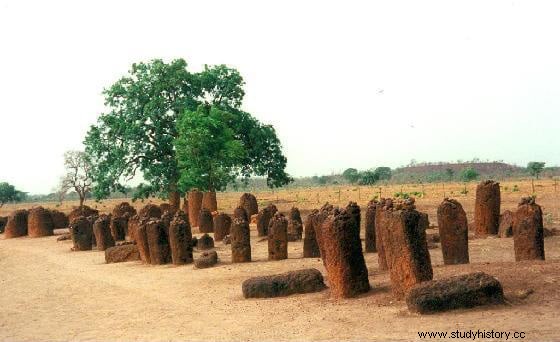The geographical region of Senegambia on the western coast of Africa houses the largest group of megalithic complexes in the world, the famous Stone Circles, which are distributed throughout the territory of Senegal and Gambia.
If the largest concentration of dolmens on the planet is found on the Korean peninsula, the honor of hosting the largest group of megalithic complexes corresponds to the central area of Senegal bordering the north of Gambia, an area of 30,000 square kilometers between the two countries north of Janjanbureh (former Georgetown) delimited by the Gambia River and the Saloum River.

They are groups of circles whose dating has been established in the third century BC. for the oldest, and the XVI AD. for the most recent. Up to 1,053 groups have been found with some 17,000 circles and approximately 29,000 stones whose dimensions and weight vary, the largest reaching 10 tons in weight. Each circle comprises between 10 and 24 stones.
They were first investigated by archaeologists Todd and Ozanne in 1903. The former, along with Wolbach, excavated some of the larger circles in 1911 and determined that their construction could not be attributed to the peoples who were at the time they occupied the territory.

Around the circles burial mounds have been found with human remains, ceramics and metal objects, although the relationship of these tombs with the circles is still not very clear. Some theories suggest that those who built them were farmers, since all the circles are close to rivers, but spears have appeared in some tombs, which would indicate that they were hunters.
In fact it is not known exactly if the tombs are before the circles, contemporary or later. According to local legends, the circles would have been built around the tombs of the kings of the ancient empire of Ghana. Some historians attribute the stone circles to the Serer people, based on evidence that they still use very similar burial mounds.

Many of the monoliths form circles, even double circles, but others also appear isolated or in single rows or parallel rows. They are made of laterite that was quarried with iron tools, although researchers have been unable to link any of the few such deposits found in the area to the stones.
The largest monolith of those that make up the complex is located in Wassu, Gambia, it is 2.59 meters high and forms part of a circle that includes 10 other stones.

But the area with the largest number of circles is Sine Ngayene, in Senegal, with 52 circles, one of them double, and 1,102 stones in total. Archaeological excavations carried out in 2002 concluded that some tombs here clearly predate the megaliths. They also found remains of contemporary houses of the circles, which would indicate the presence of a small community related to them.
What is clear is that the area is home to the largest group of megalithic complexes in the world, nowhere else on the planet is there a similar profusion of monoliths.
